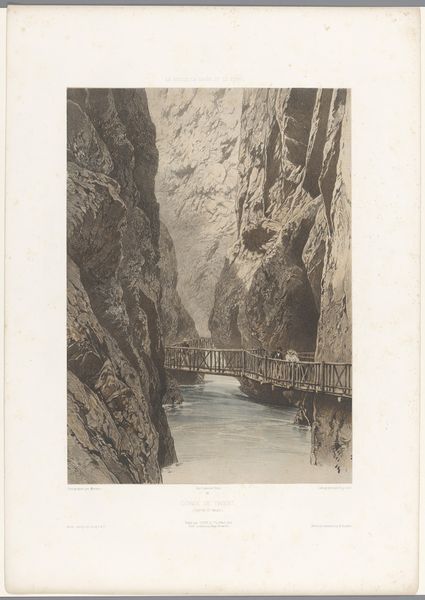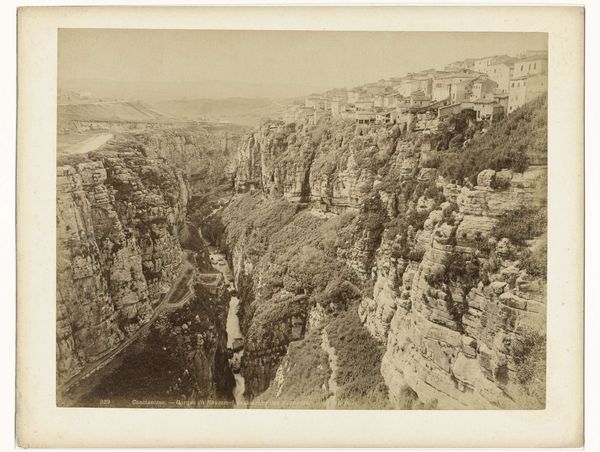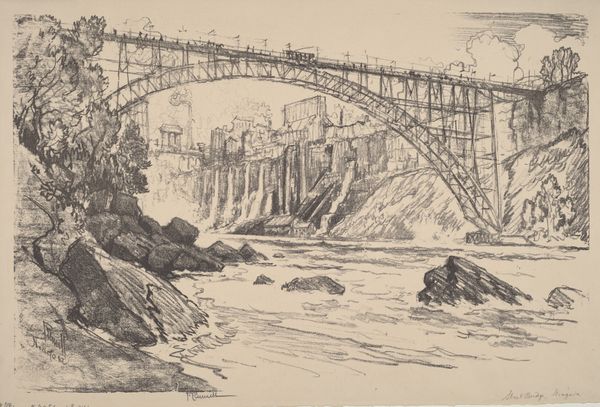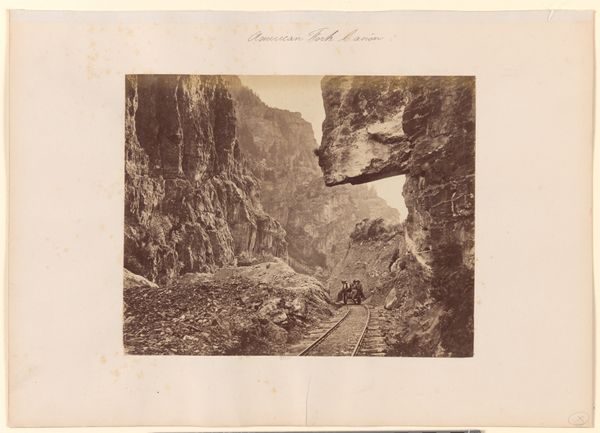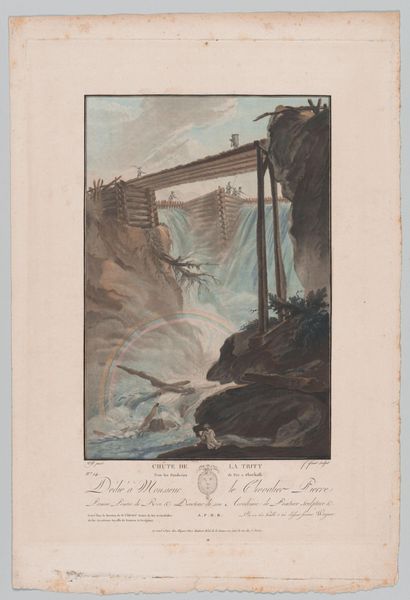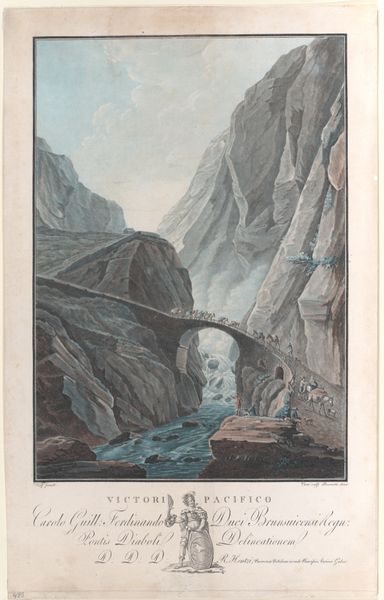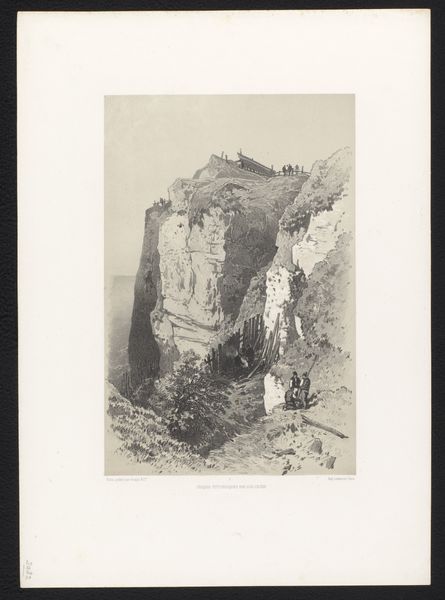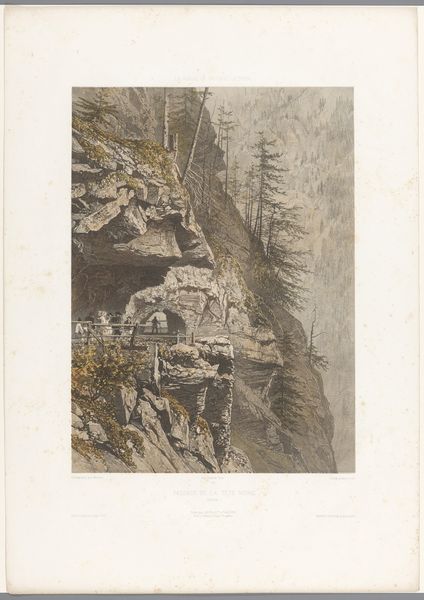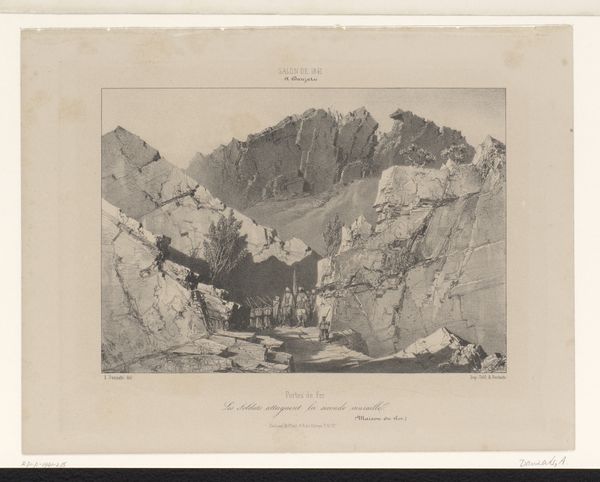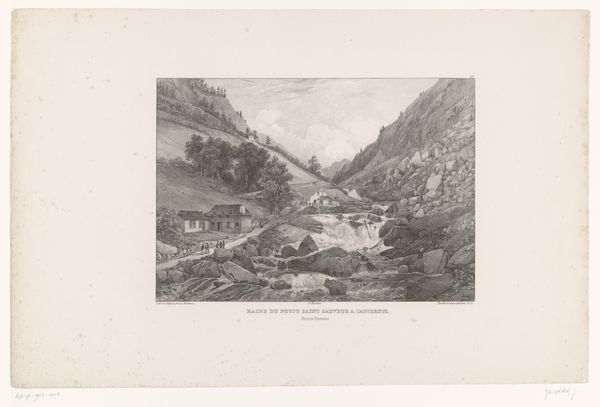
Dimensions: height 378 mm, width 472 mm
Copyright: Rijks Museum: Open Domain
Editor: Here we have Jean Marc Dunant Vallier's print, "Zicht op de Pont de la Caille in de Haute-Savoie," created sometime between 1828 and 1882. The engraving is quite striking; the bridge seems so fragile compared to the imposing landscape. What story do you think this image is trying to tell? Curator: It is tempting to read this engraving through the lens of industrialization versus nature. However, consider how this bridge, "Pont Charles Albert", becomes a symbol of connection and power. Bridges physically and metaphorically connect people. During this period, burgeoning industrial advances allowed easier access to other regions, thus impacting trade and immigration policies. In what way might this newfound "freedom" disrupt traditional power structures and impact marginalized communities? Editor: I hadn't considered that. I was focused on the sublime aspect, the romantic notion of nature dwarfing human endeavors. Your reading situates it within political and economic power struggles. Curator: Exactly! What appears initially to be an innocent landscape reveals much deeper societal dynamics when we apply an intersectional lens. It encourages critical engagement. Are those promises of "freedom" truly attainable for everyone? How do factors such as race, gender, or socioeconomic status come into play? Editor: So, it's less about the bridge itself and more about the questions it provokes about access and equity. Curator: Precisely. Consider the concept of accessibility. The construction of the bridge doesn’t ensure freedom for all. Instead, think about which communities could navigate the infrastructure, and at what cost? How would access impact the socio-economic structure already in place? Editor: That’s a fascinating way to think about it; shifting focus to consider structures of power inherent within the print allows for critical discussions concerning its subject matter, and beyond. Thank you! Curator: Absolutely, questioning representation helps us decode what narratives the artwork hides, and what it promotes.
Comments
No comments
Be the first to comment and join the conversation on the ultimate creative platform.
